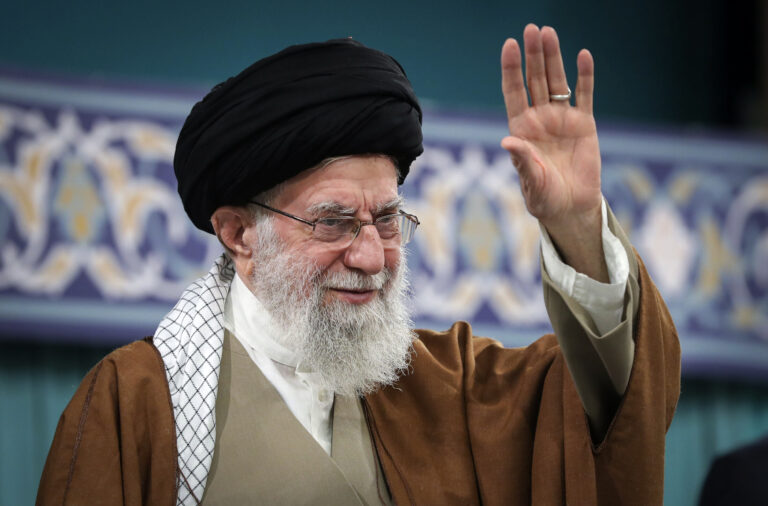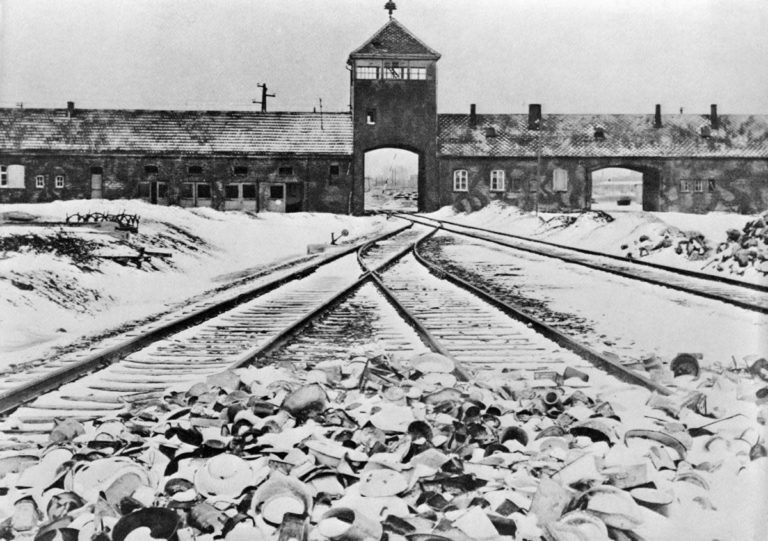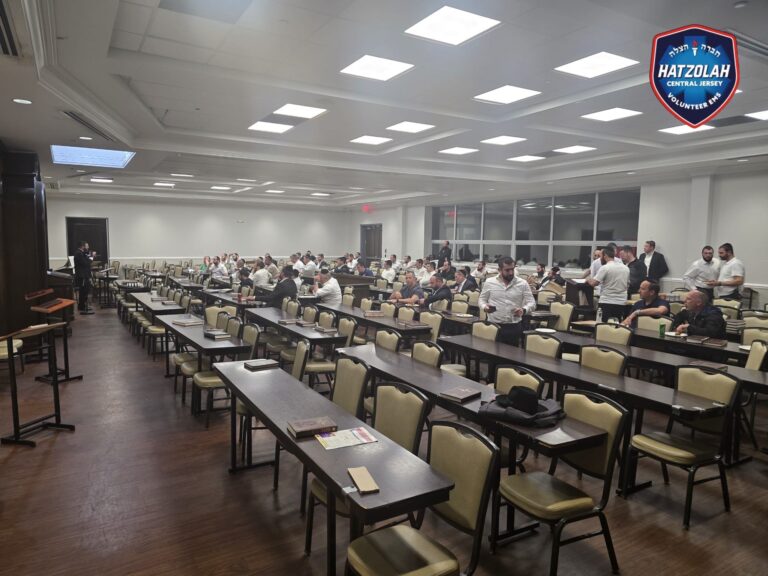 The following is the NY times article about the Vizhnitzer Rebbe ZATZAL:
The following is the NY times article about the Vizhnitzer Rebbe ZATZAL:
Rabbi Moshe Yehoshua Hager, the leader of one the world’s largest Hasidic sects, the Viznitz Hasidim, and a participant in Israeli politics who encouraged moderation on issues like the expansion of settlements in the occupied territories, died early Wednesday in Bnei Brak, east of Tel Aviv. He was 95.
He had been suffering from Alzheimer’s disease, said Alexander Rapaport, a follower who runs the Masbia soup kitchens in Brooklyn and Queens.
YWN NOTE: Click HERE for photos of the life of the Rebbe, and click HERE for photos at the massive Levaya.
The depth of affection for Rabbi Hager was evident not only in the tens of thousands of Hasidim who surged around his body, shrouded in a prayer shawl, at his funeral on Wednesday in Bnei Brak, but also in the hundreds of Brooklyn followers who, because of the time difference, were able to fly to Israel to attend the service.
Later, hundreds streamed into Kaser, an almost exclusively Viznitz village in Rockland County, N.Y., to pay their respects to Rabbi Hager’s younger brother, Mordechai, who heads the sect’s American branch, as he began observing shiva, the seven days of mourning.
The Viznitz sect numbers 5,000 families in Israel and perhaps as many in North America in the Borough Park and Williamsburg sections of Brooklyn; Lakewood, N.J.; Montreal; and other places.
The group’s roots go back at least to the first half of the 19th century, to the village of Vyzhnytsia in what is today western Ukraine. The mother of Elie Wiesel, the Nobel Peace Prize winner, had a Viznitz background. The Viznitz men dress in the black suits and hats characteristic of Hasidim but distinguish themselves by wearing the hat bow on the right side.
Rabbi Hager, who wore a long, white beard and black eyeglasses, was reputed to study 70 pages of the Talmud a day, and was known for his scholarly discourses on ethics. Unlike some Hasidic leaders, he did not shun the intrigue of Israeli politics, and for many years he was president of the Council of Torah Sages of the Agudat Israel party, now part of the United Torah Judaism coalition, which has five seats in the Knesset.
In that capacity, Mr. Rapaport said, Rabbi Hager discouraged the more expansionist visions of the settlers’ movement: that the Jews of Israel were entitled by biblical prophecy to inherit the entire West Bank.
Rabbi Hager explained his position by recalling a story about his grandfather, a grand rabbi, who had visited followers in a distant town. There he was asked whether he preferred to worship in the small Viznitz synagogue or in a prayer hall that could hold a larger crowd. He responded with a Yiddish rhyme — “klein und mein” (small and mine) — suggesting that it is better to have smaller territory that one controls than larger lands under dispute.
Despite a housing shortage, he forbade his followers to live in the West Bank. And in 1990 he was willing to join Shimon Peres, a liberal, in a governing coalition, though that arrangement never materialized because of opposition from other ultra-Orthodox members of the Knesset.
He was so esteemed in the wider Hasidic world that, in the manner of the royal families of old Europe, marriages were arranged between his daughters and the sons of three different dynasties. The sons-in-law became grand rabbis. Among the daughters, the eldest, Chana Chaya, married Rabbi David Twersky, the grand rabbi of the Skver sect based in New Square, N.Y.; Sarah married Rabbi Yisachar Dov Rokeach, grand rabbi of the Belz Hasidim in Jerusalem; and Sosha married Rabbi Aaron Teitelbaum, chief rabbi of the Satmar faction in Kiryas Joel, N.Y.
In addition to those daughters and his brother, Rabbi Hager is survived by his second wife, Sheindel; two sons, Yisrael and Menachem Mendel; another daughter, Hinda Erenster; and a sister, Tzipora Friedman. There has been a struggle between the two sons over who will succeed Rabbi Hager.
Moshe Yehoshua Hager was born on April 16, 1916, in Grosswardein, today known as Oradea, Romania. His father and grandfather were both grand rabbis, who moved their headquarters to more Western areas of Austria-Hungary during World War I because Russian soldiers were wantonly killing Jews.
In the midst of World War II, the young Rabbi Hager established a yeshiva in Grosswardein. But not long after, the Nazis occupied Hungary, and the rabbi and his family were smuggled over to the Romanian side; from there they made their way to British Palestine. Many Viznitz followers were murdered in massacres and concentration camps. Rabbi Hager and his father re-established the community’s remnants, first in Tel Aviv and then in Bnei Brak. In 1972, Rabbi Hager inherited his father’s mantle.
Among his distinctions was his emphasis on the customs of the mikvah, the ritual bath. Mr. Rapaport said that Rabbi Hager had encouraged Viznitz men to immerse themselves every morning as a way of purifying themselves for the day of study and prayer ahead.
While all mikvahs require that a small portion of “natural” or “living” water, like rainwater, be blended with faucet water, Rabbi Hager required that the mikvah for women in Bnei Brak be composed entirely of rainwater. That was a particular challenge in Israel’s dry and torrid climate, but the mikvah has continued to operate that way today, using water collected in rainstorms.
(Source: NY Times)











12 Responses
Who cares what the NY TIMES covers or not?
Are we now more chasuv if the TIMES knows we exist?
Not every one is equipped to be a spokesman to the media, good deeds not withstanding.
The New York Times also ran a story when the Chofetz Chaim was niftar.
Although I stopped reading the NYT more than 25 years ago, I respectfully disagree with those who couldn’t care less what the NYT covers or doesn’t cover.
Like it or not, the NYT is read by many, many upper-class people of Jewish origin. Most don’t have an inkling what we are all about or our rich and often tragic history.
Surely some will be moved to find out more about their own background, and who knows, could one day move in our direction.
It is a positive article and I commend the NYT for printing it (and for YWN for bringing it to our attention).
Leave it up to the Times to point out, more than once, that the Rebbe z’l was not in favor on “settlements” and living in the “west bank” as if that was the chashivus of the Rebbe. And where did they get this from? “There has been a struggle between the two sons over who will succeed Rabbi Hager.”
“Rabbi Hager, who wore a long, white beard”? This is the NY TImes, the newspaper of record? Did he wear it every day? Even the Yated write better than that.
#6 ploinder: The linguistics and usage of language in that sentence is quite correct.
#5 For those wondering why the TIMES covered the petirah of the Rebbe, it was for that reason only. So that an article featuring 200,000 followers at the funeral will be counted as 1/5 of a million who are ALSO (like the TIMES) anti-settlements and anti-west bank.
It is wrong to say ‘what do i care what they say’. Just the opposite, it shows what a kiddush Hashem he made go the world. And what a shame you aren’t following go his ways.
if you can read yiddish and what to know more about the Rebbe click here
http://yi.wikipedia.org/wiki/%D7%9E%D7%A9%D7%94_%D7%99%D7%94%D7%95%D7%A9%D7%A2_%D7%94%D7%90%D7%92%D7%A2%D7%A8
So the Vizhnitzer Rebbe now has some new Chasidim – The New York Times who like his position on the territories. To paraphrase a famous saying – With Chasidim like these, who needs Misnagdim.
Rav Shach had the same position, advocating giving back the territories for peace. So did most Gedolei Yisroel.